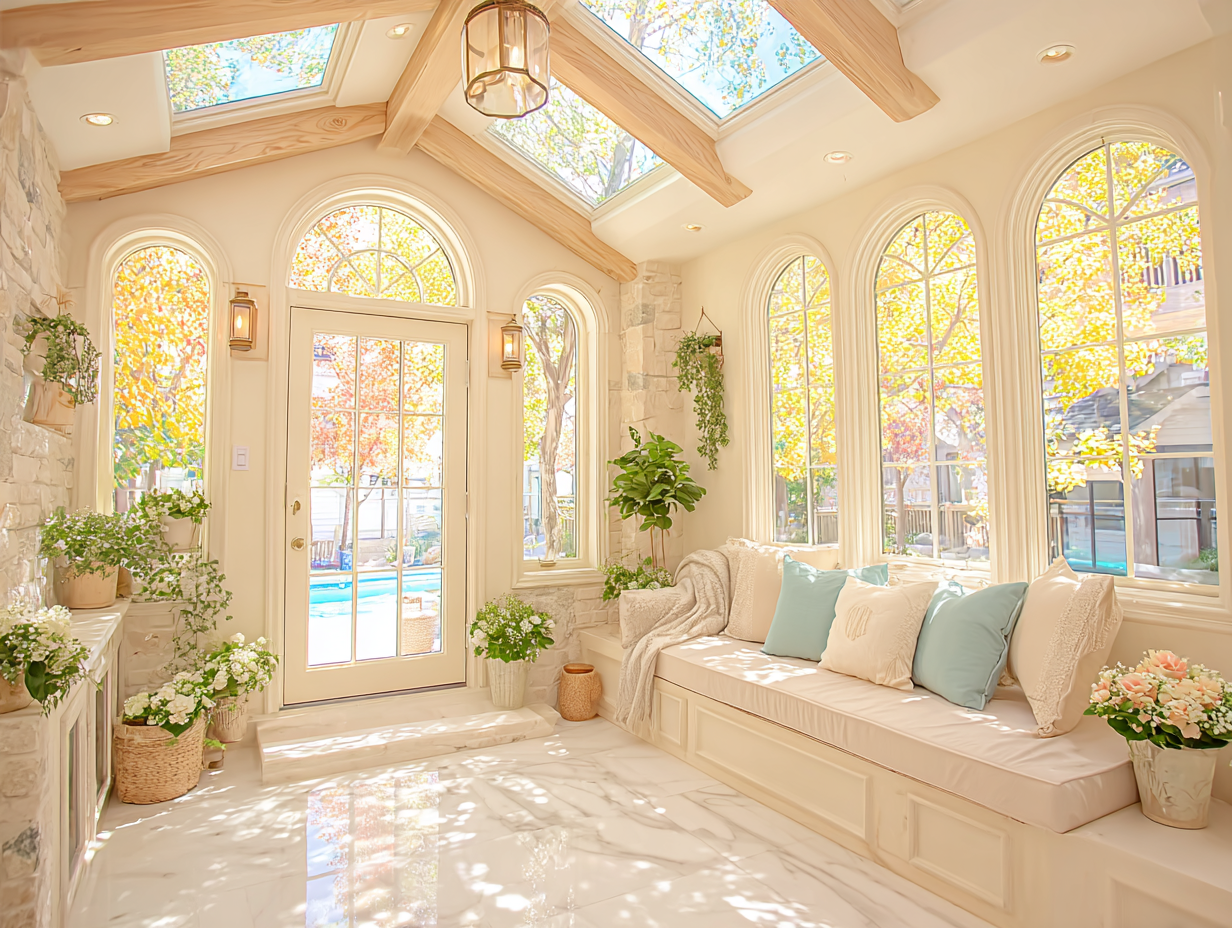You’re getting ready to sell and then—uh oh—you discover that sunroom, garage conversion, bonus room, or deck was never permitted. Don’t panic. In North Carolina, you have options, and with a smart plan you can still get to the closing table without torpedoing your price. This guide breaks down what to do next, the pros and cons of your choices (retroactive permits, selling as-is, or adjusting price/credits), and how those choices play with disclosures, appraisals, buyer financing, and insurance.
Before we dive in, a quick note: building codes and enforcement are handled locally, under statewide rules. Cities and counties issue permits and do inspections, but they follow the North Carolina State Building Code and state law in Chapter 160D. That’s why one town might require one set of submittals, another might ask for more, and both are still “right” under the law. When in doubt, your first call is to the local building department where the property sits.
Why Unpermitted Work is a Big Deal in NC
There are three big reasons: safety/code compliance, disclosures/liability, and value/financing.
1) Safety and code compliance. North Carolina law requires permits for most construction, reconstruction, alterations, and additions. Cities like Wilmington are very explicit: a building permit is required for additions, alterations, expansions, and remodels. If work is done without a permit, local officials can issue a stop-work order and assess penalties or require corrections. Some counties will also assess additional fees when you apply for a “missing” permit after the fact.
2) Disclosures and liability. In North Carolina, most residential sellers must provide the “Residential Property and Owners’ Association Disclosure Statement” (RPOADS) under the Residential Property Disclosure Act (Chapter 47E). The form asks about known issues and changes; sellers who make an incorrect statement must update it or fix the problem. The NC Real Estate Commission has cautioned sellers and brokers about renovations without permits—misrepresentations can come back to bite. You can choose “No Representation,” but you still can’t lie or conceal material facts.
3) Value, appraisals, and financing. Appraisers working on loans for Fannie Mae use ANSI square-footage standards and must provide clear commentary about unpermitted additions, including how they affect value and marketability. Lenders also expect the improvements to represent a legal (or at least legal non-conforming) use. An unpermitted addition might not be counted in the home’s gross living area (GLA) and can complicate loan approval—especially if the space involved plumbing or electrical. Bottom line: unpermitted space often contributes less to appraised value and can limit buyer financing options.
Step Zero: Confirm What You Really Have
Sometimes work was permitted, but paperwork is missing; other times the addition predates you. Don’t guess.
Pull the permit history and file. Call or visit your local building inspections office (city or county). Ask for permits, inspections, and the Certificate of Compliance/Occupancy for the addition. Many jurisdictions maintain online permit portals; others can pull the file for you.
Review your disclosure obligations. Read (or re-read) the RPOADS form and the Commission’s guidance so you’re answering accurately. If you discover something that changes your prior answers, update the disclosure promptly.
Ask a pro. If structural work, electrical, plumbing, or mechanical systems are involved, have a licensed contractor or engineer evaluate the addition. If you plan to legalize the space, you’ll likely need drawings and possibly sealed letters anyway. (NC law requires permits for most structural, electrical, plumbing and mechanical work; there are limited cost exceptions, but they do not apply to many common addition items.)
With the facts in hand, choose one of three paths.
Option A: Pursue a Retroactive (“after-the-fact”) Permit
If time and budget allow, legalizing the addition can maximize your buyer pool and reduce surprises during appraisals and inspections.
What retroactive permitting usually looks like (your city/county may vary):
Application & drawings. You or your contractor submit a permit application with plans. If walls are closed, inspectors may require “exploratory” openings to verify framing, wiring, insulation, plumbing, and tie-ins.
Inspections & corrections. The inspector examines accessible work, may require portions to be opened, and issues a correction list. Expect to bring the work up to current code—not the code at the time of construction if it can’t be verified—before final approval. Local enforcement can issue stop-work orders until you’re in compliance.
Fees & penalties. Jurisdictions can charge additional fees for unpermitted work. Some counties can impose a stop-work order and a double permit fee when you apply after being caught without a permit. You may also need to secure a new permit if an old one expired mid-project.
Final approval. Once corrections pass, you receive a final inspection or certificate, which supports your marketing package and buyer underwriting.
Pros
Broadens your buyer pool (easier for conventional/FHA/VA buyers).
Helps appraisal and square footage reporting under ANSI, which can support value.
Reduces post-contract drama during due diligence when inspectors and appraisers are hunting for red flags.
Cons
Time: Depending on scope, drawings, and inspections, this can take weeks to a few months.
Cost & uncertainty: You might need to open walls, move mechanicals, or redo portions to meet code, plus pay penalties/fees where applicable.
Property tax implications: Legalizing additional heated space can increase assessed value in some counties (discuss with the tax office; this isn’t uniform and depends on how your county handles discovered square footage).
Tips to do it right
Talk to the building department early to learn their exact process and whether they allow “as-built” drawings for after-the-fact permits.
Hire licensed contractors. For many scopes, licensed trades are required; the state licensing framework is enforced locally.
If you’re in a historic district, you may also need a Certificate of Appropriateness (COA) for exterior changes—even retroactively. In some areas, non-compliant work can lead to reversals and civil penalties.
Option B: Sell “as-is” With Full Disclosure
Sometimes the timing (or cost) of legalization doesn’t make sense—say you need to list right away, or the addition is small and unlikely to pass without major surgery. You can still sell “as-is,” but you must set expectations correctly.
Disclosures matter. Provide the RPOADS and answer truthfully about the addition and permits. The NC Real Estate Commission has explicitly warned about the risks of undisclosed or misrepresented unpermitted work. Even if you pick “No Representation,” you may not mislead or conceal material facts. Your broker must also disclose material facts to buyers.
Square footage and marketing. Industry guidance in North Carolina is clear: if a house totals, say, 3,475 sq ft but 850 sq ft was added without a permit, a broker can show the full number only if the unpermitted portion is clearly identified as such. This protects you and the buyer and reduces appraisal confusion later. Practically speaking, many agents list the permitted GLA and then highlight the “additional unpermitted finished area—see disclosures.”
Appraisal and financing realities. Appraisers must comment on unpermitted areas and assess any impact on value. Lenders and appraisers will analyze whether the improvements are legally permitted or represent a legal non-conforming use. If work looks unsafe or substandard, that can be a deal-killer for financing. In contrast, a minor, well-built room that’s unpermitted may still contribute some value, just not as much as fully legal living area. Expect a conservative approach.
Who buys “as-is”?
Cash buyers and investors who can move fast and aren’t constrained by lender overlays.
Renovation-loan buyers (e.g., conventional renovation programs or FHA 203(k)), though those programs still require the finished property to meet code and can be paperwork-heavy.
Insurance and title caveats (why clarity helps). Insurance is a private contract with underwriting guidelines; insurers can decline or non-renew based on risk factors, and title insurance generally excludes zoning and building-code violations. This is another reason transparency—and, when possible, legalization—can avoid headaches for your buyer.
How to present an “as-is” sale well
Provide a pre-listing inspection or engineer letter on the addition’s structure/systems.
Disclose scope and date (to the best of your knowledge), and note whether you obtained estimates to legalize or remove the work.
Be airtight with language. Your listing and disclosures should plainly say the addition was not permitted and is priced accordingly.
Option C: Adjust Price (or offer credits) to Bridge the Gap
If the cost, timing, or risk of a retroactive permit is heavy, and “as-is” disclosure feels too open-ended, a price adjustment or seller credit can calibrate expectations.
How to think about pricing:
Start with comps of similar legal living area. Don’t count the unpermitted area as full GLA when you’re targeting your list price. Treat the unpermitted space as a bonus with caveats and price to the legal living area baseline. That’s how most appraisers will approach it.
Estimate the legalization cost (plans, openings, corrections, fees/penalties, finish repairs). Share that estimate in your disclosures so buyers see a path.
Consider a seller credit toward buyer closing costs or a mutually agreed scope of corrections—executed by licensed contractors prior to closing—if you want to keep your sticker price higher. In North Carolina, repair negotiations typically occur during the buyer’s due diligence period, so a clear paper trail helps both sides.
A note on timing and due diligence. Under the standard NC offer, buyers often pay a non-refundable due diligence fee for the right to investigate (inspections, appraisal, permits, etc.) and decide whether to proceed before the due diligence period ends. If an unpermitted addition pops up late, it can jeopardize the deal. Your best move is to surface the issue up front, document it, and price accordingly so buyers do not feel blindsided.
Choosing the Right Path: a Quick Decision Framework
Use this checklist to match your situation to a strategy:
Go for a retroactive permit when…
The addition is significant heated space (bedrooms, baths, conditioned sunroom).
You have a 4–10+ week runway before listing and access to licensed contractors.
Your target buyer will likely use conventional/FHA/VA financing and top-tier comps justify the effort.
Sell as-is when…
The addition is small, mostly non-habitable (e.g., a storage room), or unlikely to meet current code without major rework.
You need to list immediately (estate, relocation, timing constraints).
You’re comfortable with investor/cash buyer competition and conservative appraisals.
Adjust price/offer credits when…
The path to legalize is clear but time-consuming.
You want to cast a wider buyer net while acknowledging the work ahead.
You’re listing during a brisk season and want to keep momentum without a long pre-market delay.
Practical Steps and Scripts You Can Use Today
Call the building department.
“Hi, I own [address]. I’ve learned a [sunroom/garage conversion/etc.] might not have been permitted. What’s your process for an after-the-fact permit? Do you require as-built drawings or openings for inspection? Are there additional fees?”
Then ask how to request the permit history file.Line up a contractor/engineer.
Ask for a site visit and a written estimate to (a) legalize the work or (b) decommission/restore it. This will anchor either your pre-market scope or your pricing/credit conversation.Tighten your disclosures.
Complete the RPOADS accurately and update it if new information makes a prior answer inaccurate. Include any estimates or letters as attachments to your listing documents.Plan your square-footage story.
Coordinate with your broker on how the MLS will represent the home’s GLA and the unpermitted area. If any total figure is shown, clearly label the portion that is unpermitted—this helps prevent confusion with appraisers and buyers.Prepare for appraisal.
If you legalized the space, have that final inspection signed off and ready. If you’re selling as-is, provide your documentation packet (disclosures, estimates, engineer letter) to the buyer’s side early; appraisers must comment on unpermitted areas and their impact on value and marketability.Mind special areas.
If your home is in a historic district or overlay, ask whether a retroactive Certificate of Appropriateness is required for exterior changes. In some places, non-compliant work may have to be reversed.
Frequently Asked Questions We Hear in North Carolina
“Do I always need a permit for an addition?”
Yes—additions, alterations, expansions, and most structural/mechanical/electrical/plumbing work require permits. While state law includes a limited cost-based exemption for some projects (work under a certain threshold), it does not apply to many common scopes (structural changes, load-bearing, electrical, plumbing, mechanical, etc.). Your local jurisdiction will tell you what’s required for your situation.
“What fines or penalties might I face?”
It varies by jurisdiction. Expect at least the full permit fee and potentially a multiplier; in some counties, working without a permit can trigger a stop-work order and double permit fees when you apply after being caught without one. You also may be forced to open finished areas for inspection and complete corrections to current code.
“Can I count the unpermitted space in my square footage?”
Don’t assume you can. Appraisers working to common lending standards must comment on unpermitted areas and may exclude them from the home’s GLA. Many MLSs require that unpermitted finished areas be identified separately. Doing so avoids appraisal and lending issues later.
“Will buyers still get financing?”
Sometimes. Conventional lenders may proceed if the appraiser explains the addition and the property meets highest-and-best-use and safety standards. But unpermitted work can spook underwriting, especially for systems work (plumbing/electrical) or ADUs. Renovation loans can be a bridge, but they come with extra steps.
“What about insurance?”
Insurance is a private contract; companies set underwriting guidelines and can decide what risks they’ll accept or continue to insure. Title insurance typically excludes zoning and building code violations. For your buyer’s peace of mind (and your sale), clarity and compliance help.
A North Carolina-savvy Strategy to Move Forward
If you have time, legalize the addition. It’s the cleanest solution and typically supports value and financing. If you’re under the gun or the scope is messy, sell as-is with meticulous disclosures and expect to target cash or flexible buyers. If your buyer pool is broad but price-sensitive, adjust the price or offer credits that approximate the cost to permit or correct the work.
Whatever you choose, do three things well: tell the truth on your disclosures, document everything, and set expectations early in your listing copy and with every showing agent who calls.
This article is for general information for North Carolina homeowners and is not legal advice. Always confirm the current process with your local building inspections department and consult with a real estate attorney or licensed contractor as needed.







